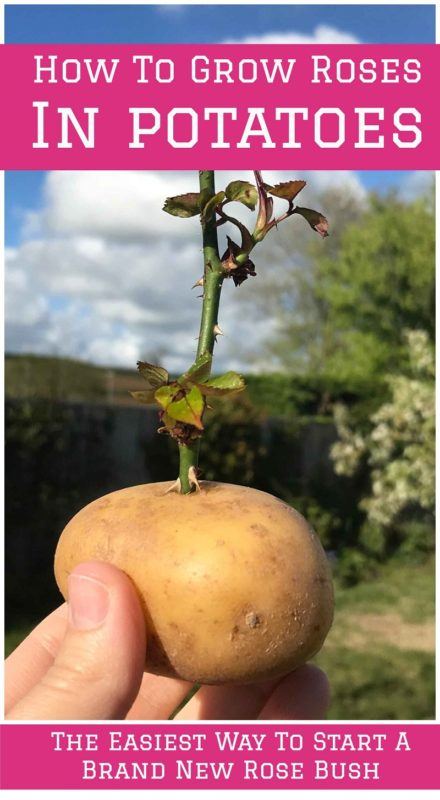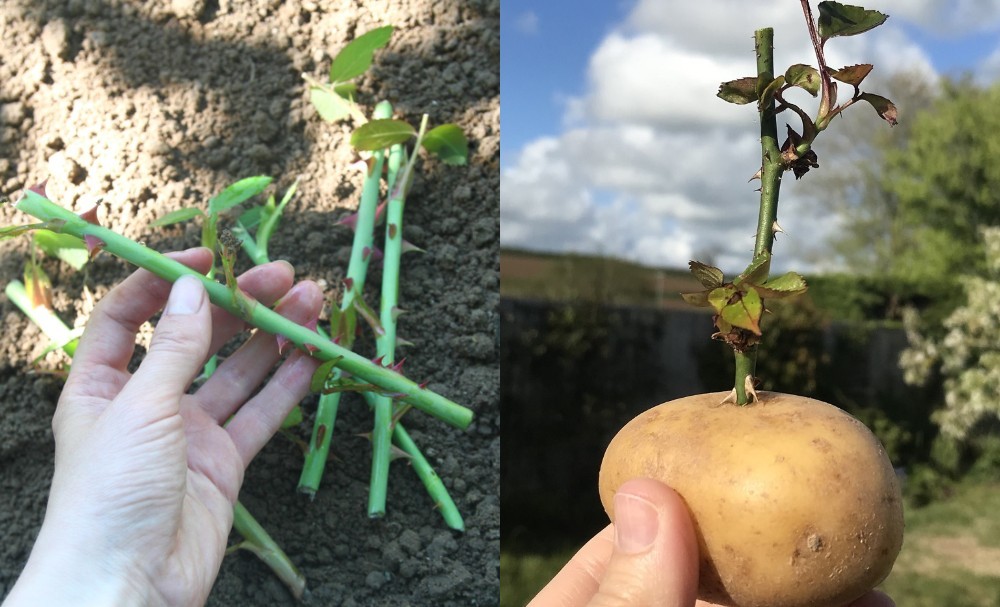
Their sweet aroma fills the air and their delicate, yet vibrant colors entice the eye.
Gertrude Stein said it best when she said, “A rose is a rose is a rose.”
Do you have a desire to fill your garden with sweet smelling roses? If so, propagating is the right way to go.
The experience will make you a better gardener, there is no doubt.
Don’t buy into the misconception that roses are difficult to grow from cuttings. It is really not that hard at all.
Unlike seeds that produce unique plants, rooted cuttings produce the spitting image of parent plants.
This is great if you want to carry on the legacy of a favorite family heirloom rose or you just have a variety that you really love or want to share.
What You Need To Know Before You Start
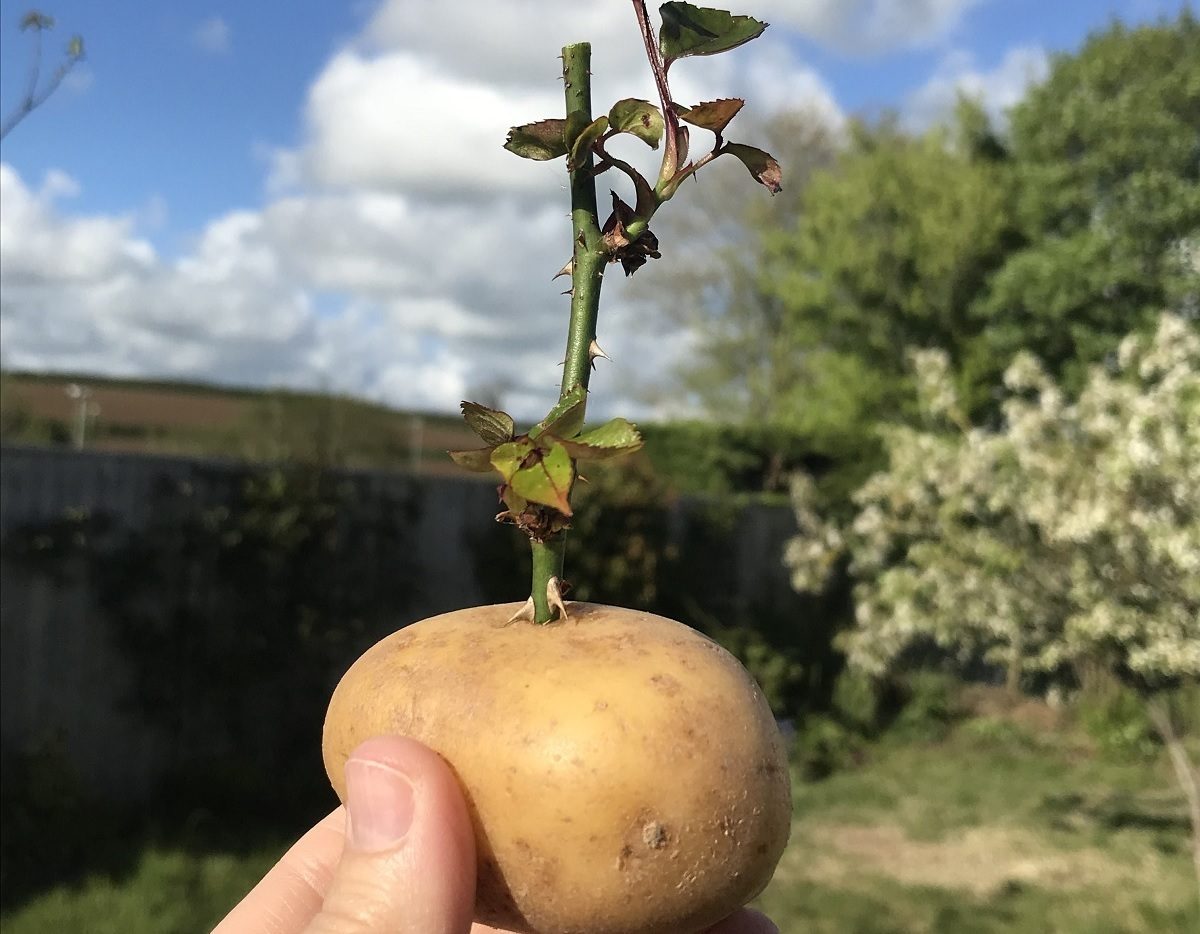
By far, the most popular way to grow roses is from cuttings. Cuttings are defined as parts of the stem that are cut from the plant at various stages of growth.
Follow these tips for perfect rose propagation from cuttings.
While some plants are fussy about what type of cutting will root, roses are pretty flexible. You can freely take cuttings from the present year’s stems at three main growth stages:
Softwood cuttings: This is the most popular and easiest type of cutting and is taken when new stems are beginning to mature. The best cuttings are the same diameter as a pencil and taken just below spent blooms.
Semi-hardwood cuttings: When the new stems are partway mature they are considered semi-hardwood. Take these cuttings in summer or late fall.
Hardwood cuttings: Hardwood cuttings are slow to take but can still be successful. Take the cuttings in later fall or early winter when new stems are mature, hard and dormant.
Should rooting hormone be used?
Your chances of success with any type of cutting can be improved if you use rooting hormone. It can make the task of getting new roots to start a bit easier and may eliminate frustration when used.
This is a high quality rooting hormone that can significantly increase your chance of success.
How To Take Cuttings From Roses
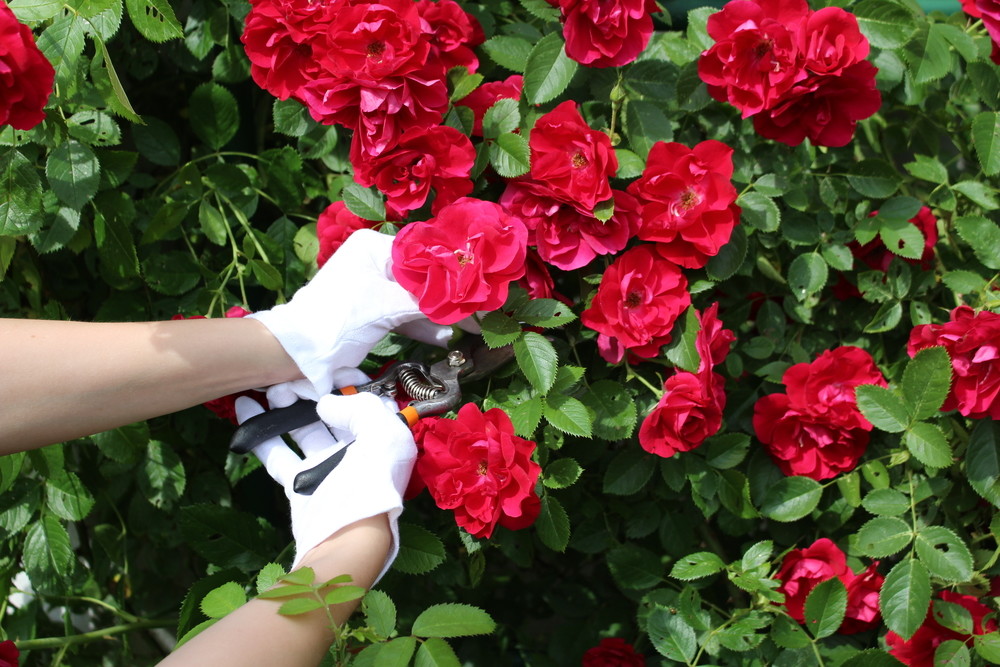
Because many things, such as weather can impact when softwood cuttings are best, don’t operate by a set date.
It is best to do a physical examination of the entire plant before taking a cutting to ensure that it is ready.
Always take cuttings from healthy and robust plants and do so in the early morning when plants are well hydrated.
The first step after the examination is to gather your supplies including:
- Clean bypass pruners
- Small bucket with warm water
- Rooting hormone (this is a good option)
- Shallow dish for rooting hormone
- Pencil or a small stick
Securing Rose Cuttings
- Choose a stem that is located in between a faded bloom and the base of the rose plant. Keep in mind that you can get several cuttings from one stem.
- Take off both the bloom and the stem tip. Cut on a 45-degree angle, slightly above the first set of leaves at the top. Make another cut just above the last set of leaves at the bottom. Place your cuttings in your bucket immediately.
- Cut your larger piece into smaller pieces that are about 8 inches in length. All cuttings should have at least four “nodes.”
- Remove all leaves except one set closest to the top of each cutting.
Preparing Your Planting Area Or Container
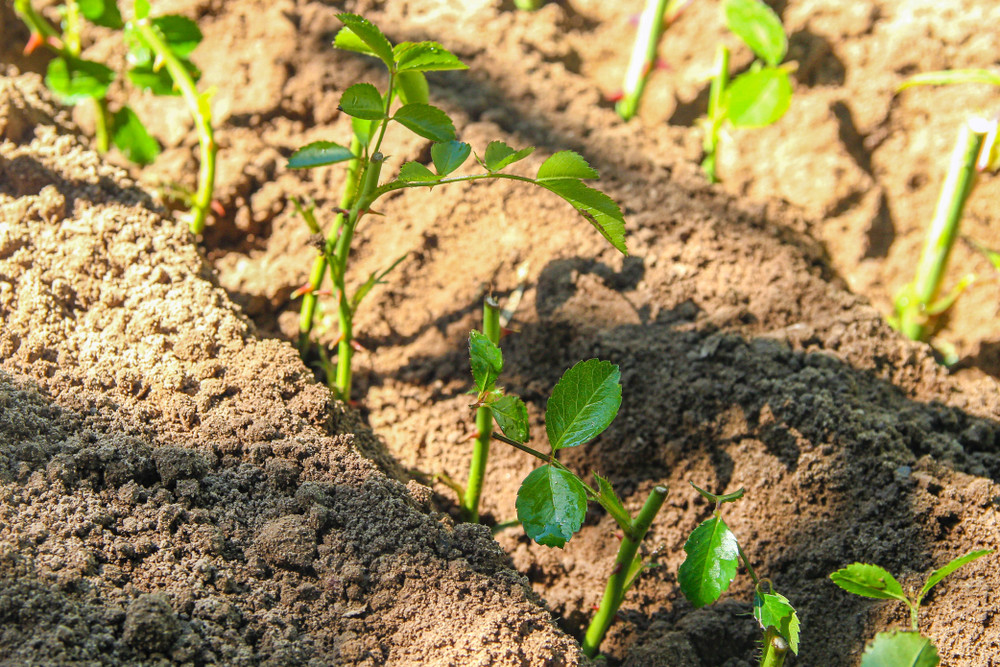
It is important to have your planting spot prepared before you take cuttings. The sooner you can get your cuttings into the ground or a planting container, the better.
Softwood cuttings can be planted right into your garden or in a container or deep tray.
- Choose a spot that receives bright but not direct light.
- Break up any clumps in the soil down to about six inches.
- If your soil is heavy, add some sand so that the roots will be able to penetrate without using too much energy.
- Fill containers with equal parts of coarse sand and perlite. Water the mix thoroughly.
Planting Rose Cuttings
- Place a small amount of rooting hormone into your shallow dish. Be careful not to pour too much because you must discard what you don’t use.
- Dip the end of the cutting into the rooting hormone, be sure that it is entirely covered in rooting hormone.
- Make a hole using a stick or pencil that is 3-4 inches deep in a rooting bed or 6 inches deep in a container. Be sure that the hole is deep enough so that you won’t brush off any of the rooting hormone when planting.
- Cover at least two nodes.
- Firm the soil up around the cutting.
Caring For Newly Planted Rose Cuttings
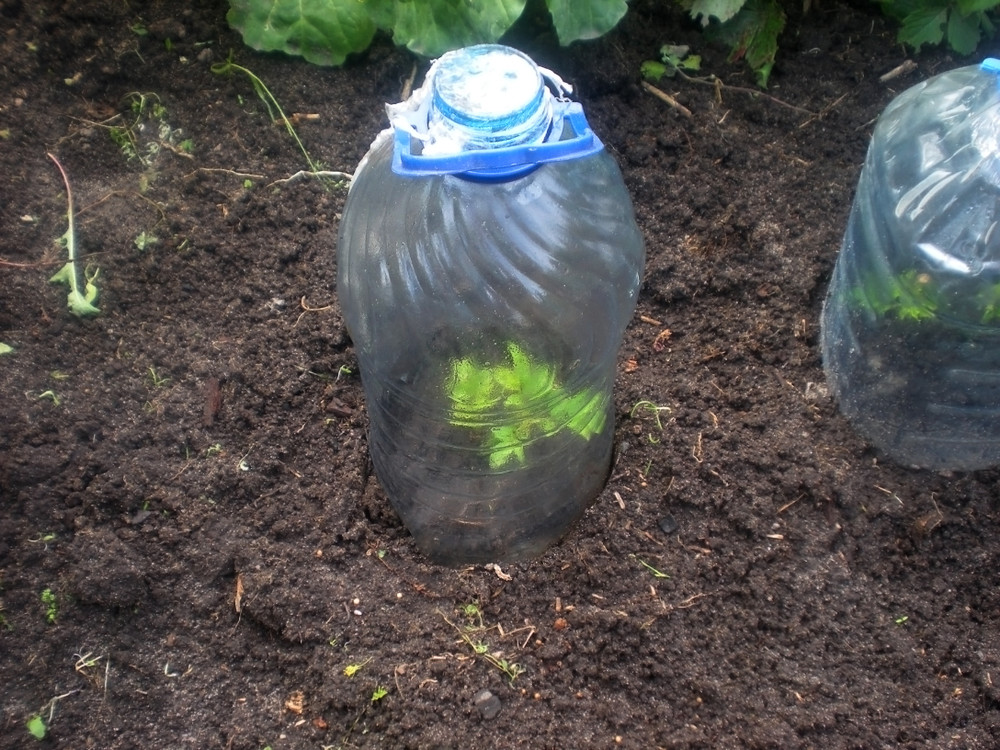
Rose cuttings must be kept moist and covered while taking root. You can create a little mini greenhouse in a garden bed by using a mason jar turned upside down over the cutting.
If you don’t have a mason jar, cut the bottom out of a plastic bottle and do the same thing. Keep the soil moist but not soggy.
For cuttings in containers, you can use a clear plastic bag supported by some twigs or small stakes. Don’t allow the plastic to touch cuttings.
Keep cuttings moist by misting.
Softwood cuttings generally take root between 10 and 14 days. You can see how far they have come by tugging very gently on the cutting.
If there is a slight resistance, it is likely that new roots have formed. Feed your cuttings with a fish-based fertilizer which will provide necessary nutrients to boost growth.
Allow your cuttings to become established and grow some before transplanting into your garden.
A Word Of Caution
Keep in mind that some roses root easier than others – for example, old fashioned roses will root better than the modern hybrids.
However, you can still try and should not let this discourage your efforts.
Can Roses Be Grown In Potatoes?
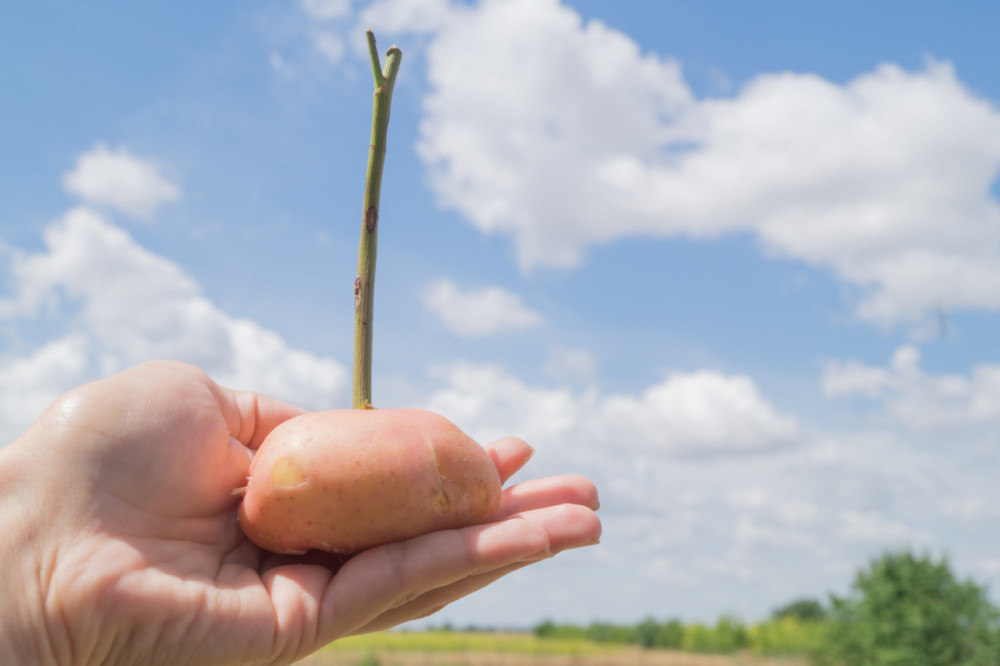
Growing rose cuttings in potatoes is a popular project that often goes viral on social media. But does it really work?
Yes, you can plant rose cuttings in potatoes, and it is a fun project to try – even for the novice gardener. Potatoes provide not only nutrients but also moisture for cuttings.
Here Is What You Need
- Rose cutting
- Irish potato, peeled
- Pot – medium size
- Potting mix
- Screwdriver, the same diameter as the cutting
- Rooting compound
- Spoon
- Plastic soda bottle, with the bottom, cut out
Here Is How To Do It
- Fill the pot with organic potting medium and moisten slightly.
- Use a clean screwdriver to make a 3-inch hole in the potato.
- Pour a little rooting hormone into a shallow dish.
- Moisten the cutting and dip it into the rooting hormone.
- Place the cutting into the hole.
- Use a clean spoon to make a hole in the potting medium.
- Place the potato into the hole allowing just the cutting to be exposed.
- Place the empty soda bottle on top of the cutting to create a mini greenhouse. Twist the bottle in the soil to be sure that it is secure.
- Locate your pot where it will receive indirect light.
- Let the cutting breathe daily by taking the bottle off.
- Mist the soil daily to keep it moist.
- When you feel some resistance on the cutting and new roots have formed, relocate your pot to a place where it will receive more direct light.
Allow the cutting to grow and when it is time, begin to harden it off outside by placing it outdoors for a few hours each day.
Gradually increase the amount of time the pot is outdoors.
Keep it in a sheltered location out of direct light and be sure that the soil is moist.
Transplant into your outdoor bed after one week of hardening off.
Happy rose planting!
Pin This To Save For Later
